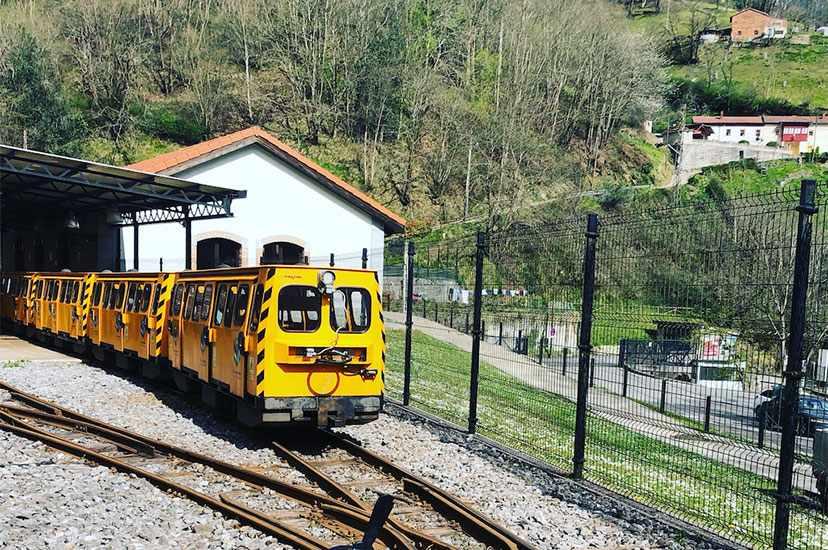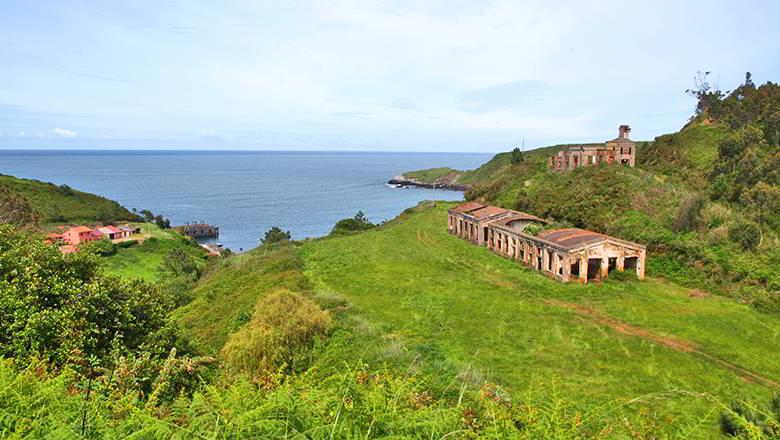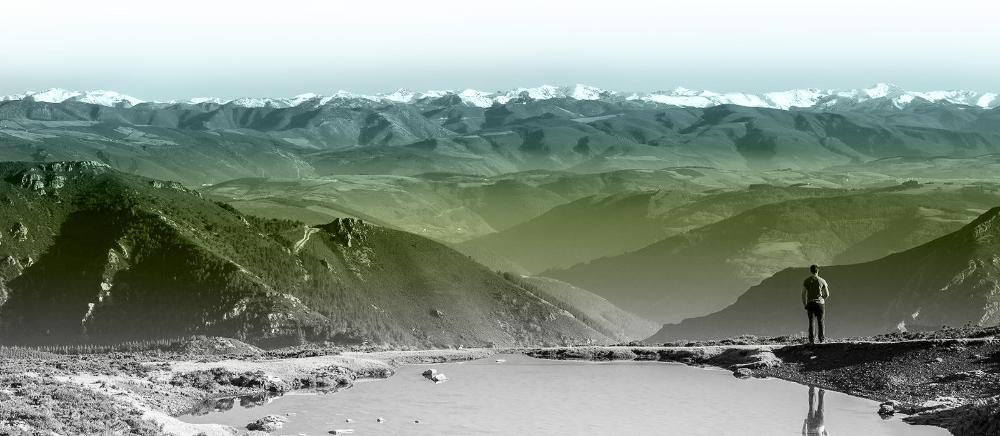Back 7 irresistible plans to feel like a miner in Asturias

7 plans to experience the thrill of being a miner in Asturias
Asturias is a land that gives you the chance to put yourself in the shoes of a miner... Here are 7 irresistible plans!
Have you ever thought of travelling to Asturias and experiencing unusual sensations, the kind you can't even imagine? Well, you are in a land of promise, with surprises in store for you at every turn. One of the most striking and different is the possibility of getting into the skin of a miner in 7 different ways, each one more irresistible than the last? 7 marvellous plans that will be unforgettable.
Asturias, naturaleza minera
In the Asturias of mining nature there are many and varied plans to get into the skin of a miner. Here we suggest 7 plans!
So when you come to Asturias - with the strength of your inner GPS always oriented towards the Natural Paradise - you will find what you already know, but you will also discover new attractions, based on the immense attraction of an identity and a history that emerge with unusual energy in every corner. The characteristic energy of Asturias, mining nature.

Suddenly the solid and rich bowels of the Asturian earth welcome you in a warm and hospitable way so that you yourself can be the author of such impressive discoveries as a unique cultural heritage, founded on rocks from which mineral riches have been and are extracted that have transformed the history and life of mankind.
To delve into the many secrets of mining and manufacturing Asturias, the best thing is comfortable shoes, camera or mobile phone in hand, online or offline map and a great desire to experience, to know, in a two-dimensional journey in space and time...
Bustiello, un poblado minero de película
To find out what life was like for the miners on the face of the earth, there is an ideal place, as if it were the set of a period film. It is called Bustiello and is in the council of Mieres.
And beyond the risks taken when working underground, on the surface the mining society was a clear exponent of a whole culture that is now extinct, and you will experience all this in situ in your "film" of Bustiello, a company town financed by the 2nd Marquis of Comillas, where "industrial paternalism" and the social relations between employers and workers are very explicitly materialised.

A walk around Bustiello, with a guided tour, will reveal many striking details of the life of the miners outside. The church, the casino, the school, the sanatorium, the accommodation for engineers and workers... Everything in Bustiello responds to a careful plan and a great aesthetic care that was exceptional and unusual for the period in which it was conceived.
Samuño or the train that you can't miss to feel like a miner
The narrowness of the valleys of the Nalón basin always favoured the mechanical - and nowadays very romantic and adventurous - component of the railways that snaked through the bowels of the earth and also outside, transporting the coal to the washhouses for its subsequent classification.

No doubt for train lovers - both children and adults - the Samuño Ecomuseum, in Langreo, will surprise you with an absolutely recommendable and very epidermic experience to understand the mining soul. You will travel two kilometres from the Cadavíu and descend from the train 30 metres underground. Then, via a lift - known as a cage in mining jargon - you will reach the esplanade of the historic San Luis shaft. The slender derrick that seems to touch the clouds, the impeccable engine room, the engines, the auxiliary buildings... Everything in San Luis, on your guided tour, will give you a comprehensive view that does full justice to the motto of this installation "One valley, one mine, one people".
Pozo Sotón, for you to pick up a series of coal
If you want to find out what it means to dig a series of coal, the best thing to do is to go to the Sotón shaft, and there, in addition to a guided tour of the surface installations of the Sotón, which has been declared an Asset of Cultural Interest, you can go down into the mine.
In this impressive double shaft, which is more than 550 metres deep and is located in the municipality of San Martín del Rey Aurelio, you have the chance to go underground with specialised guides who are miners by profession, in an unforgettable experience that has two versions: the short one, lasting two hours, and the long one, lasting four hours.

Outside, it is very interesting not to miss the Centro de Experiencias y Memoria de la Minería (Experiences and Memory Centre of the Mining Industry) located in the lamp shop and wash house of the shaft, and you will surely find particularly impressive the mining memorial installed in a part of the Sotón esplanade, where hundreds of plaques on the green grass are arranged in a geometric form in a kind of garden-homage to the thousands of people who died in work accidents in the Asturian mining industry.
Mumi: a mine image to flood your retina
The Museum of Mining and Industry, located in L'Entregu/El Entrego, in the municipality of San Martín del Rey Aurelio, has been a pioneering thematic space to disseminate in a didactic and entertaining way everything that mining means in its different areas of influence: scientific-technical, social, landscape, cultural, etc.

And if this museum was a pioneer, its now famous "image mine" is still a pioneer, faithfully reproducing a mine gallery, which you access in a lift or cage, where you descend eight metres, but the simulation is so successful that you have the sensation of descending many more.
In case this vibrant sensation is not enough for you, you can go up in a mining train that, underground, connects the museum with the historic San Vicente shaft, and once there, after the relevant explanation, you return along the same track to the museum.
All in all, a very complete experience to get an idea of what mining life was like in Asturias.
Texeo: ancient mining at the foot of the mythical mountain of L'Angliru
On your journey in search of mining sensations, you will see that mining in Asturias is a very old phenomenon, sometimes dating back thousands of years.
This magnificent landscape in the Sierra del Aramo mountain range, Mount L'Angliru, which the cyclists in the Vuelta a España (Tour of Spain) strive to climb to an altitude of 1,200 metres, is probably familiar to you: at its foot lies an important deposit of copper and other metals which was mined as far back as 2,000 BC, as the remains in the National Archaeological Museum bear witness. Texeo, in the municipality of Riosa, offers a terrain full of ancient tunnels and galleries, interspersed with buildings from the 19th and 20th centuries, which bear witness to its very long productive history.

Following a signposted route of little difficulty that goes from Llamo/Ḷḷamo - where you can leave your car - to Rioseco, where the houses and facilities for administration and processing of the ore from the last stage of work are located, you will be at the beginning of the path that winds its way to Campa les Mines. Some explanatory panels and a sculptural viewpoint will contribute to the enjoyment of your mountain visit, in which you will feel like a real miner from ancient times, in the middle of a place where you can clearly perceive the sensation of a landscape that has been humanised, using picks and shovels and a lot of sacrifice, for centuries and centuries.
Llumeres Mines or the saltiest iron on the shores of Cape Peñas
A magical place on the Asturian coast is the cove of Llumeres, in the council of Gozón - in the vicinity of Cabo Peñas - where you will find what was once the longest active iron mine in Asturias. Its history goes back to antiquity, but the most significant and closest thing to us is that since 1858 and for more than a century, work has been carried out in this area uninterruptedly. The bakery, the warehouse, the toilet block, the offices and the machine house of the former Simancas well still stand on the cliff. These vestiges of a bygone era stand before your eyes like real stone giants that treasure the echoes of a thousand stories of mine and sea.

Where the waves break, you will discover an old mine and the wharf from which the ships loaded with ore used to leave for Gijón. A pedestrian route, called Senda Norte, will allow you to discover it in a slow and natural way.
San Esteban: Spain's largest and most beautiful coal port on the banks of the Nalón River
As small as it is beautiful, the council of Muros de Nalón treasures a unique maritime enclave: the port of San Esteban, which began as a fishermen's jetty to become, after the arrival of the Asturian Basque Railway, an industrial centre of enormous vitality which has been succeeded by a peaceful sporting and recreational present.
Bathed in a light that is said to be unique, this locality maintains its historic headquarters of the Port Board of Works and exhibits Indian houses of impressive size, which coexist with the powerful cranes and the old coal loading bays, converting the whole complex into a sculptural memory of a glorious past.

On the quay you will find, moored to an old noray, "El Vaporín", the oldest sailing vessel in the Cantabrian Sea.
There are many mining souvenirs to be found on the banks of the Nalón estuary. While you enjoy them, you can bathe in the seawater pool of San Esteban or sail by boat to L'Arena...
The mining nature of Asturias has plenty of surprises in store for you!
Text: María Fernanda Fernández Gutiérrez

Subscribe to our newsletter and take advantage of offers, discounts, and news
Subscribe




